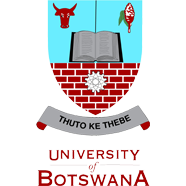Modernisation of arable agriculture in Chobe district: a search for food self-sufficiency through ALDEP, 1980s and 1990s

View/
Date
2017-01-18Author
Gumbo, Glorious Bongani
Publisher
University of Botswana, www.ub.ac.bwRights
Copyright (c) 2017 Botswana Notes and RecordsType
Published articleMetadata
Show full item recordAbstract
Food insecurity continues to be a major challenge to developing nations, including Botswana. While there is recognition that agriculture is still the primary source of employment and food supply in most sub-Saharan economies, it is ironic that agricultural productivity is cumulatively declining. In addressing the problem, authorities tended to adopt modernising strategies ‘from above’, churning out technologies but lacking synergies between targeted benefi ciaries, extension workers and development institutions. The result had been failure to generate transformative impact on food production. This paper examines the ways in which the postcolonial Botswana government intervened to modernise farming practices with a view to improving food production and also to address the gender inequality in the agricultural sector in the impoverished Chobe District in north western Botswana. Focussing on the molapo (flood recession) and rainfed/dryland farming regimes peculiar to these riparian communities, the paper tracks government’s subsidy Arable Land Development Programme (ALDEP) and agricultural extension services introduced in the district from the 1980s to the 1990s. It argues that the state’s modernisation strategy from above encountered obstacles that inhibited the goal of increased grain production. Qualitative research design, government reports and oral interviews are utilised in the paper.
Collections
- OJS imports [361]
